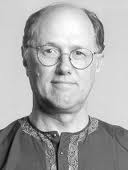Discovering Your Inner Light
by George Wolfe
During the Christmas holiday, we often see the Magi or “wise men from the east” depicted in numerous nativity displays. The allegorical journey of the Magi to find the Christ child however, is actually celebrated after Christmas on the Christian calendar, beginning January 6th with the Feast of Epiphany and lasting to the beginning of Lent.
The word “Magi” refers to the priestly cast in Persia. Among their specializations was the pseudo-science of astrology. They were following a “star,” which was probably an astrological sign, that symbolizes a light or a guide that is external to oneself. This external knowledge is shown to be incomplete, as when the Magi arrived in Judea, they have to visit King Herod and ask where they could find the infant Jesus.
Once they found the Christ child however, who represents the Divine Light within us, they could have an epiphany. This epiphany came to them in a dream, instructing them to change course and return home without telling King Herod of the child’s whereabouts. Like the Magi who were prompted to take a different direction homeward, epiphanies, often result in a change in the direction of our thinking, or when most profound, in the course of our life’s journey.
The word epiphany is defined as “a sudden realization of truth.” The experience of having an epiphany usually dawns as an “ah ha” experience that awakens us to new possibilities. An inspiration dawns deep within the mind, a flash of insight that emerges from the darkness of the subconscious, as if to be born from the womb of mystery. Knowledge is revealed from within, and a spiritual teacher is someone who knows how to trigger this type of awakening in a disciple.
Unfortunately, as church leaders imposed their rigid dogma, the story of the Magi was reduced to a mere historical event, and the concept of epiphany as an inner experience was lost.
One might ask: why could not the Magi have had the dream before they got to Judea, sparing them the need to visit Herod? It is because they were relying solely on objective observation, that is, their external light. They had not gained access to their inner light.
Reviving the experience of epiphany leads us into the fascinating study of symbolism and allegorical meaning in scripture, and not only in Christian texts, but in Hindu, Buddhist, Jewish, and Islamic writings as well. Once we set aside the historical view of religion, we discover deeper possibilities of interpretation. This pursuit then becomes an exercise in inner growth and understanding, much like koans are used by Zen Masters to awaken their disciples.
There are many examples of insights revealing themselves to people in dreams as reported by musicians, artists, and scientists as well. Years ago, when I served on a panel at the International Conference on World Affairs in Boulder, Colorado, songwriter and entertainer Steve Allen told how his most successful song, “This could be the start of something big,” came to him in a dream.
The Canadian physician and stress researcher Hans Selye, in his book From Dream to Discovery: On Being a Scientist, tells the story of Otto Loewi, the scientist who devised the famous experiment proving the chemical transmission of nerve impulses. During a conversation with Selye, Lowei explained how he awoke one night from a dream with the idea for the design of his experiment.
The story of the Magi teaches us to pursue a course of awakening so we can follow our own “inner light” which is the source of wisdom within us. In the context of social justice, this is “the light [that] shines in the darkness” (John 1:5) and which “enlightens every man,” (John 1:9). It is the light that inspires humanity to follow a higher calling and embrace greater equality. And history has shown time and again, that the darkness cannot overcome the light (John 1:5).
George Wolfe is Professor Emeritus at Ball State University and former Director and Coordinator of Outreach Programs for the Ball State University Center for Peace and Conflict Studies. He also chairs the Muncie Interfaith Fellowship, is a trained mediator, and is the author of Meditations on Mystery: Science, Paradox and Contemplative Spirituality.



